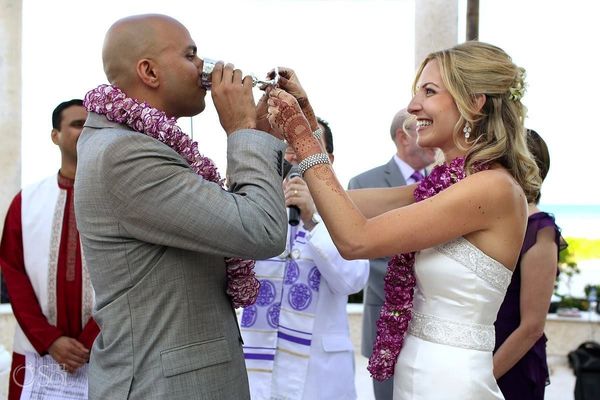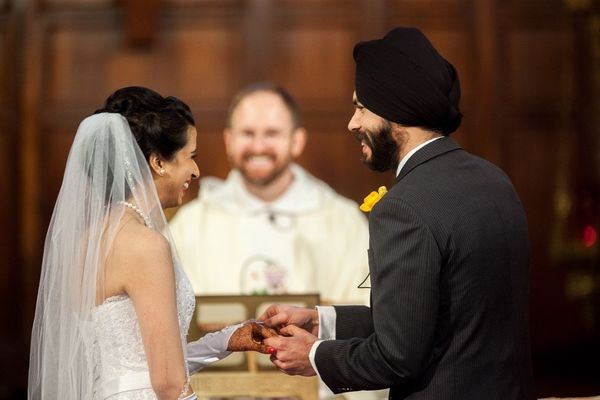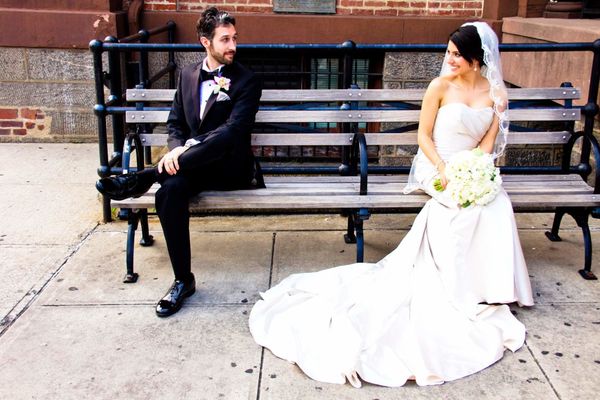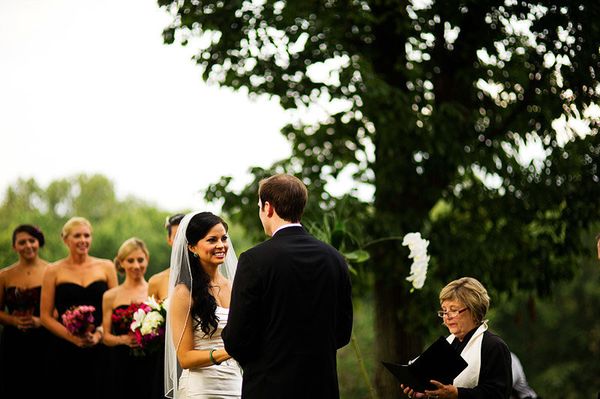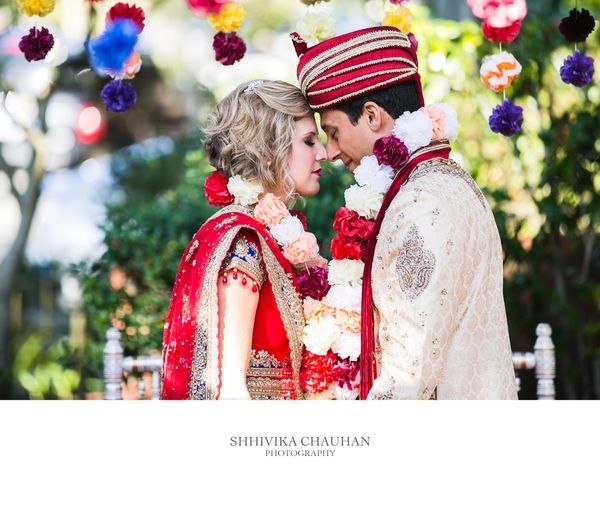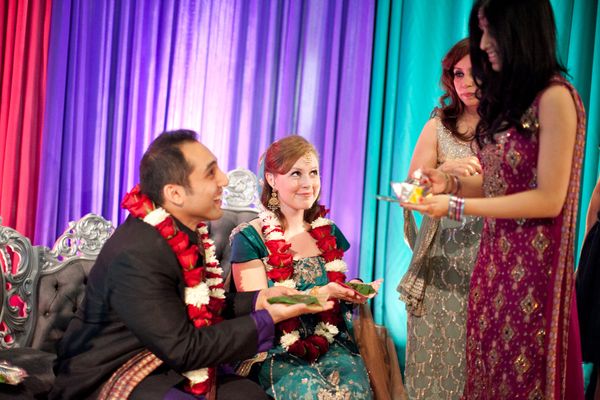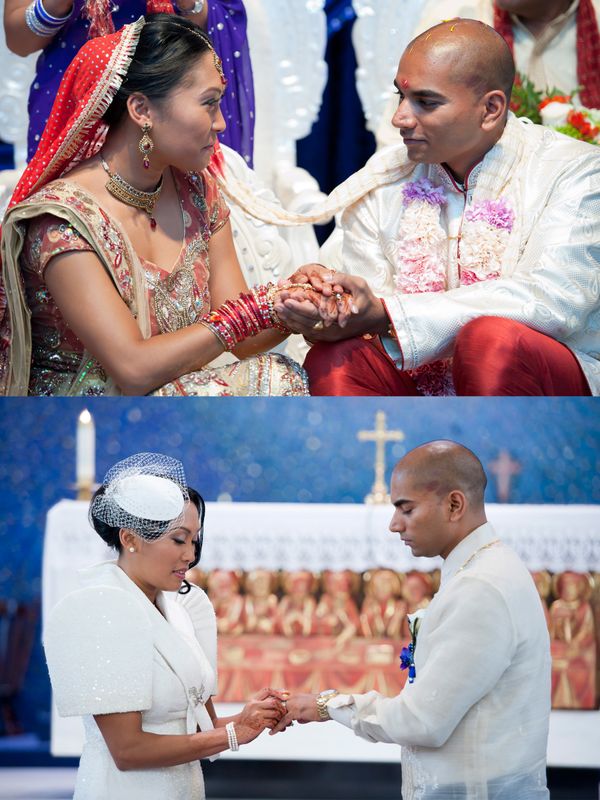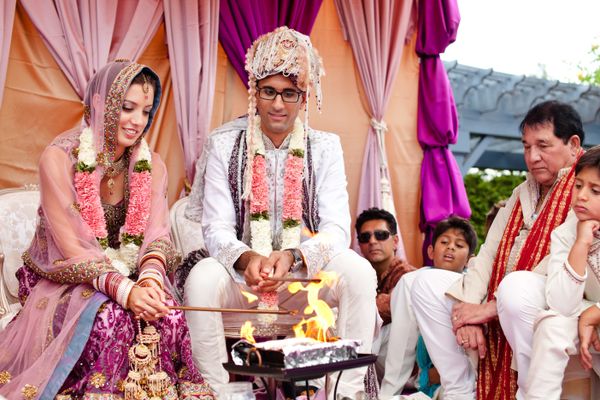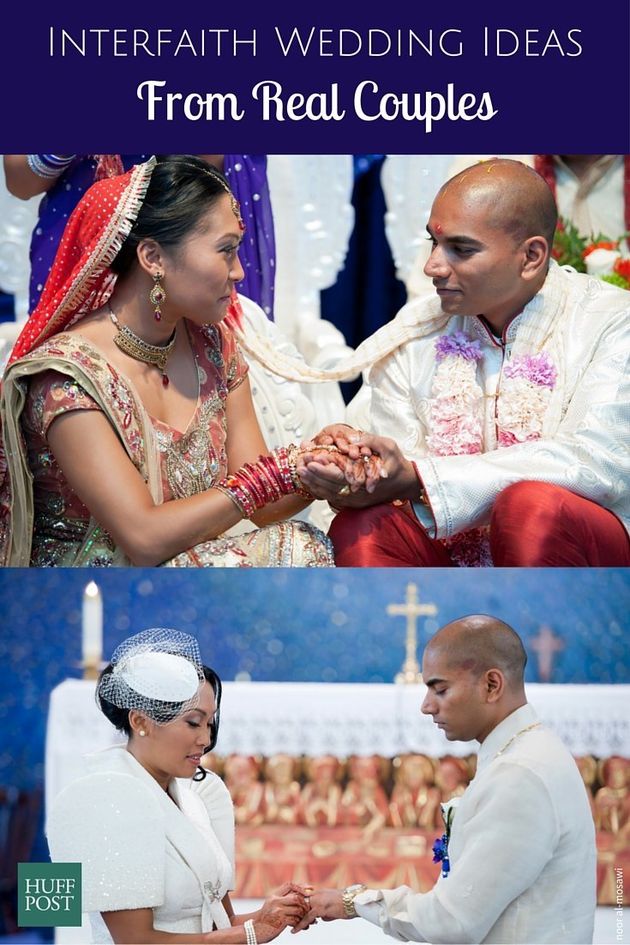
NOOR AL-MOSAWI
Planning a wedding is notoriously stressful. But for the growing number of people who are falling in love with a partner of a different faith, a wedding can come with the added challenge of trying to decide how to honor their two (or more) religions.
Should couples have one ceremony that brings their faiths together, or two separate events? Who will officiate? How much say should the parents have?
The Huffington Post reached out to nine interfaith couples who spent weeks thinking about these questions. From using a Muslim peace greeting during a Catholic ceremony to reading poems by the Sufi mystic Rumi in both Persian and English, here are some of the creative ways these couples celebrated their religious identities on their big day.
Should couples have one ceremony that brings their faiths together, or two separate events? Who will officiate? How much say should the parents have?
The Huffington Post reached out to nine interfaith couples who spent weeks thinking about these questions. From using a Muslim peace greeting during a Catholic ceremony to reading poems by the Sufi mystic Rumi in both Persian and English, here are some of the creative ways these couples celebrated their religious identities on their big day.
“As we started planning our interfaith wedding, we discovered many similarities between Hindu and Jewish customs. We therefore decided to integrate both of our traditions into one fusion ceremony that was co-officiated by the Maharaj and the Rabbi. To us, this symbolized the joining of our cultures going forward.”
— Hardik and Michelle Chaudhari, Chicago, Illinois
— Hardik and Michelle Chaudhari, Chicago, Illinois
“We decided that since both of our religions are a key part of our identities, we would honor them both. As such, we had both a Sikh and a Catholic ceremony. The Sikh ceremony was in the morning in a Gurudwara and the Catholic ceremony in the afternoon in a church. Leading up to the wedding, we also had a number of cultural traditions that we did, including a Mangalorean Roce, Punjabi Haldi andMehendi. During the reception following the ceremonies, we had a combination of Mangalorean and Punjabi traditions included in the reception.”
— Harneet Singh and Rouella Joan Mendonca, Seattle, Washington
— Harneet Singh and Rouella Joan Mendonca, Seattle, Washington
“Since Seema is Hindu and I am Christian, it took a lot of time, discussion and planning to figure out the right way to honor both of our faiths. For the wedding we chose to have a Pandit (a Hindu priest) to honor the traditions and ceremony of the Hindu culture… To honor the Christian faith we chose to get married in front of our family and loved ones, exchange vows and rings… The only thing we didn’t have was Scripture from the Bible.”
—Shannon and Seema Paul, Long Beach, California
—Shannon and Seema Paul, Long Beach, California
“Frank and I chose to have a civil ceremony officiated by our friend, Rabbi Joshua Stanton. Although a rabbi married us, we did honor both our faith traditions. Frank’s two older sisters read verses from the Bible, and my uncle read a passage from the Qur’an. Since my mother is from Afghanistan, my two older brothers read a marriage poem by Rumi in both Persian and English. We also included elements from an Afghan Wedding Ceremony later during the reception such as putting mehndi on the hand, drinking sweet juice and eating Afghan sweets to bless the marriage.”
— Medina and Frank Fredericks, Queens, New York
— Medina and Frank Fredericks, Queens, New York
“On our wedding day in Leesburg, VA, we integrated the foundations of love and peace from both the Christian and Buddhist traditions. We had a Vietnamese Buddhist monk from my mother’s temple come to bless us with chanting while my father’s Presbyterian pastor provided a message on authentic, unconditional love. The ceremony was a powerful example of acceptance, as we witnessed the monk and my pastor stand side-by-side overlooking the Potomac River. As a couple, we wholeheartedly believe that the common denominator of any religion is the transformative power of love.”
— Lena Linh Franklin & Buzz Wehunt, Atlanta, Georgia
— Lena Linh Franklin & Buzz Wehunt, Atlanta, Georgia
“We chose to honor both of our faiths in our wedding by having a dual ceremony. As guests arrived the scene was set for a traditional Indian ceremony. We had a dear family friend of the groom’s father, Uncle Madhu, lead us through the rituals of a Hindu marriage ceremony as we paid respect to our families, exchanged a mangalya (wedding necklace) and performed the sapthapadi (seven steps around the fire). After a short intermission where chai and samosas were served to guests, we gathered everyone again for a traditional ‘American’ ceremony. The groom’s uncle and godfather was ordained and married us in a very traditional format including scripture, poetry, a ring exchange and blessings.”
— Venay and Kristi Nyamathi, San Francisco, California
— Venay and Kristi Nyamathi, San Francisco, California
“We actually had two interfaith wedding ceremonies. It was important to us that both ceremonies be a fusion of our two faiths and cultural backgrounds, to fully represent the unity of joining our lives together in marriage.
The religious ceremony (held 9/11/11) was officiated by a Catholic priest and a Muslim imam, and held in the University of Chicago chapel used both for Catholic services and Muslim Friday prayer. We had readings from the Bible and a Muslim devotional poem. The ceremony included both the traditional Catholic Rite of Marriage and a Nikah, traditional Islamic marriage contract signing. We were also aware of the significance of the date and felt like our ceremony was a symbolic counter to the horrific acts a decade prior.
The legal marriage ceremony (held the day before, on 9/10/11) was officiated by an interfaith minister. She spoke of the commonalities between our two faiths (both Abrahamic, worship the same God, similar values, recognition of Jesus, deference of Mary). We began the ceremony by passing the sign of peace (an important Catholic ritual) that tied in the Muslim greeting of ‘As-salaamu Alaikum,’ meaning ‘Peace be with you.’ This ceremony also included some sayings from the Prophet and scripture from the Bible. Processional music was performed by strings (cello, violin) and a tabla and sitar (nod to Shaan’s Pakistani heritage, which was also celebrated the night prior in a henna party).”
— Katie McHugh Akbar and Shaan Akbar, Pasadena, California
The religious ceremony (held 9/11/11) was officiated by a Catholic priest and a Muslim imam, and held in the University of Chicago chapel used both for Catholic services and Muslim Friday prayer. We had readings from the Bible and a Muslim devotional poem. The ceremony included both the traditional Catholic Rite of Marriage and a Nikah, traditional Islamic marriage contract signing. We were also aware of the significance of the date and felt like our ceremony was a symbolic counter to the horrific acts a decade prior.
The legal marriage ceremony (held the day before, on 9/10/11) was officiated by an interfaith minister. She spoke of the commonalities between our two faiths (both Abrahamic, worship the same God, similar values, recognition of Jesus, deference of Mary). We began the ceremony by passing the sign of peace (an important Catholic ritual) that tied in the Muslim greeting of ‘As-salaamu Alaikum,’ meaning ‘Peace be with you.’ This ceremony also included some sayings from the Prophet and scripture from the Bible. Processional music was performed by strings (cello, violin) and a tabla and sitar (nod to Shaan’s Pakistani heritage, which was also celebrated the night prior in a henna party).”
— Katie McHugh Akbar and Shaan Akbar, Pasadena, California
“We honored our two faiths in many ways on our wedding day. First, we made the choice to both wear, including our entire wedding party, fully traditional (with a bit of a modern twist) attire for each ceremony. We had all our outfits made in India and the Philippines. Did we mention that we performed BOTH ceremonies on the same day? This way our guests and family members could enjoy the full experience of our faiths and cultures at the same time. For the Hindu ceremony, we chose Pundit Sharma, who spoke perfect English and Sanskrit so he could explain/translate the entire ceremony to everyone. This gave everyone (including ourselves) the opportunity to be connected with what was happening and be able to relate to the different aspects of the Hindu ceremony. For our Catholic wedding, Father Ben of Our Lady of the Assumption Church embraced our Hindu guests and made it a point to verbally welcome them at the commencement of our ceremony. We also served our guests with authentic Indian and Philippine dishes for breakfast, lunch and dinner.”
— Rhowena Adolfo and Veeren Patel, Toronto, Canada
— Rhowena Adolfo and Veeren Patel, Toronto, Canada
“We tried to incorporate both mine and my husband’s religious and cultural backgrounds in our wedding day by holding two separate ceremonies in one day. A ‘western’ ceremony, where I wore a white wedding dress, which incorporated both Christian and Jewish elements to represent my family, ending in the Jewish tradition of breaking the glass to a chorus of ‘Mazel Tov!’ We followed this with a traditional Hindu ceremony officiated by a Hindu Pandit where my husband rode up on a horse to meet my family, and we walked around a fire. We both wore traditional Indian outfits; him in a sherwani and me in a colourful lehenga.During the reception we continued with the Jewish traditions by dancing the hora and getting lifted up on chairs, while later we were entertained by an Indian dance group. Our Canadian and Indian influence even carried into the meal, where guests had a choice of North American cuisine, or fusion Indian dishes. It was a long day with two ceremonies and a lot of things to do and see, but well worth it as it was a memorable day for not only us but also our guests.”
Article Courtesy – Huffington Post

